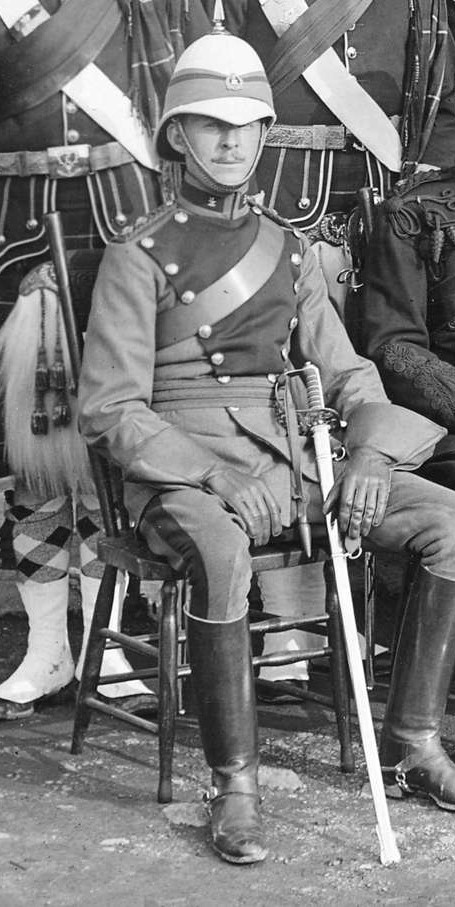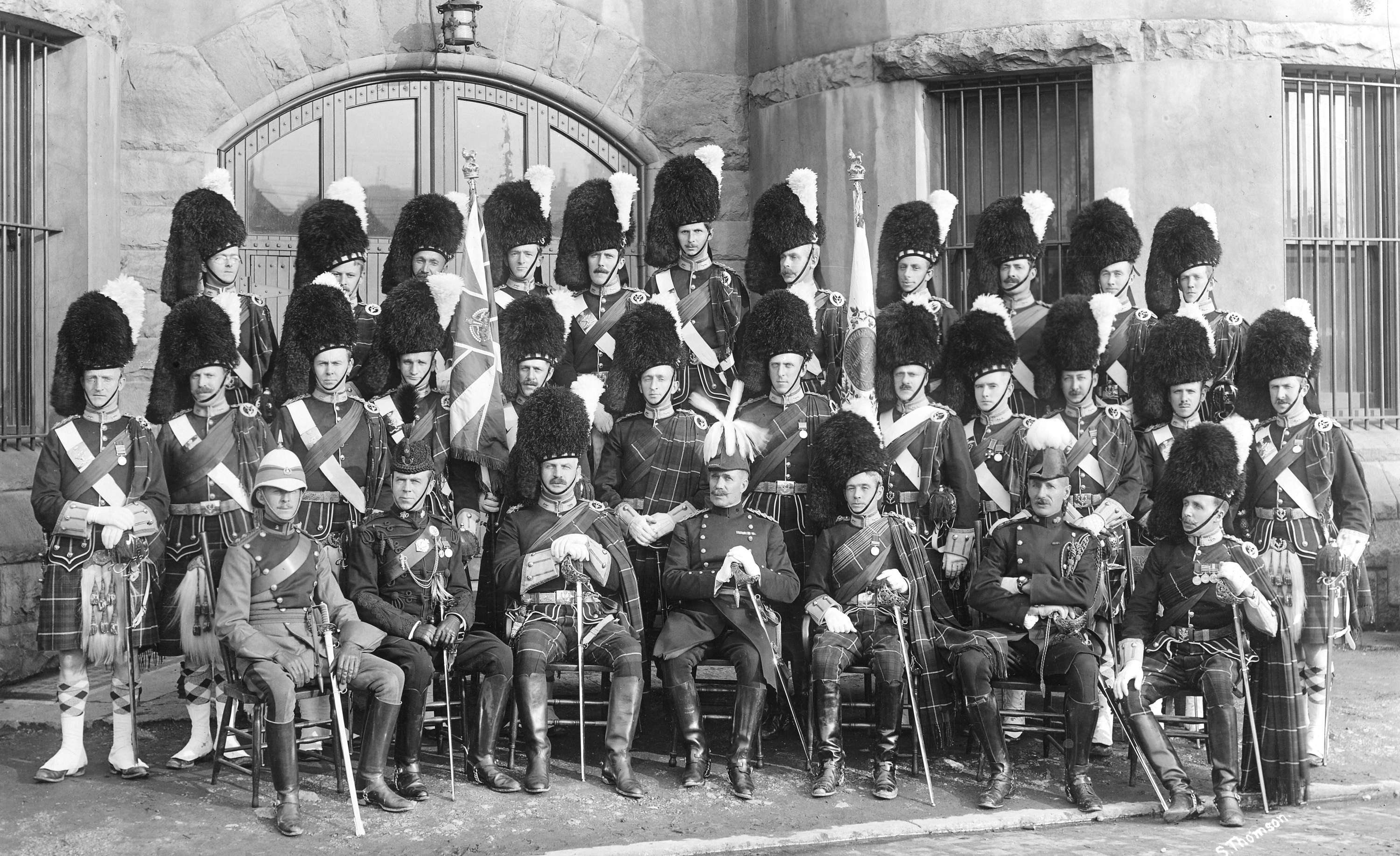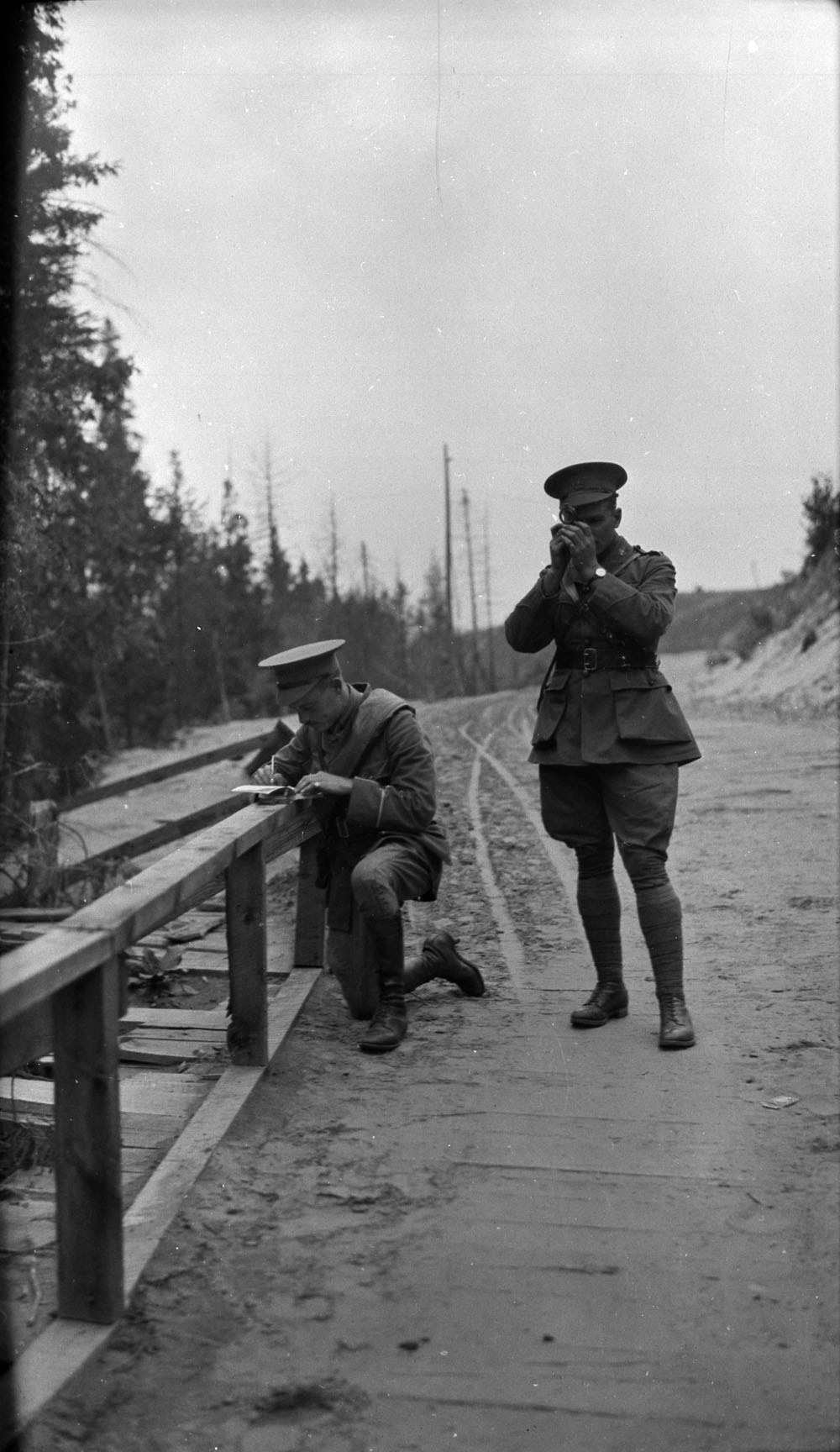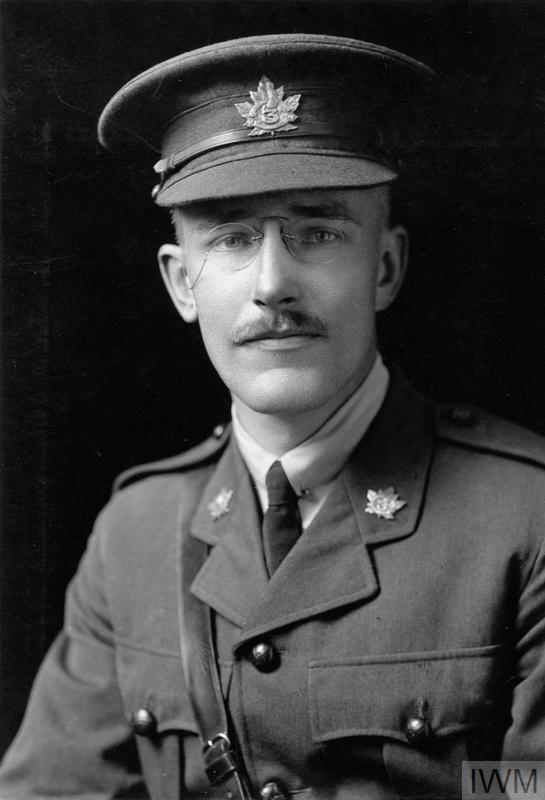The Canadian Corps of Guides was a mounted Canadian military unit created in 1903; it was a forerunner to the current Canadian Armed Forces Intelligence Branch. While the unit itself was not deployed to Europe during the First World War, many of its members volunteered for active service and rose to prominence.

Background: Guides in the British Army
The idea of a Corps of Guides in British military tradition originated in the Napoleonic Wars of the early 19th century. During the Peninsular Campaign, the Duke of Wellington raised a specialised force of light horsemen to be used in scouting, reconnaissance and map making. While the unit was disbanded after the war, the idea remained. Mounted forces were subsequently used in Canada during both the Fenian Raids and the Northwest Campaign (see North-West Resistance). Canadians also served as scouts under British command in the South African War (Boer War) at the turn of the 20th century.
Canadian Corps of Guides Established
Lord Dundonald brought the idea of a guide corps to Canada in 1902, when he was appointed as General Officer Commanding the Canadian Militia. A veteran of the Boer War, he was exposed to the concept during that conflict. On 1 April 1903, the Corps of Guides was officially formed in Canada. The orders established a company of guides in each of Canada’s 12 military districts, commanded by a district intelligence officer. The guides were specialized horsemen who had detailed knowledge of the terrain, roads and side paths around their districts. While the Corps included a foreign information branch, the focus was on defending Canada in the event of cross-border attack or insurrection.
Major William Denny, another veteran of South Africa, was appointed the first Director General of Military Intelligence in Ottawa. Other early members of the Corps also had experience in South Africa and the Northwest Campaign. At the district level, the members of the Corps were part-time soldiers, members of the militia and thus part of the local community. In practice, many of the recruits came from larger cities where the Corps was concentrated. Candidates had to pass a series of written and practical tests, including equestrian skills, to join. The initial training, normally offered during the summer, consisted of surveying, military sketching, reconnaissance and the staff duties of intelligence officers.

Intelligence Role
By 1906, the British military had pulled its staff from Canadian headquarters and its troops from Canadian fortifications. This was part of a gradual transition of responsibility from the British army to the Canadian militia for the defence of the country. Canada developed its forces in line with the British model, in which intelligence staff were drawn from the professional military; however, the Canadian professional force was so small that it could not afford to transfer officers from branches such as artillery or engineering to intelligence. Therefore, Canadian headquarters decided that intelligence officers would be drawn from the Corps of Guides, as they had been trained in surveying, sketching and reconnaissance. Should a Canadian division be sent to war, the Corps of Guides would provide most of the intelligence staff. While the Corps maintained their role as a mounted unit, work as intelligence professionals became an important secondary purpose. (See also Intelligence and Espionage.)
In addition to field training, the Corps association met annually to discuss unit business and current topics of military interest. In 1911, for example, Charles H. Mitchell gave a presentation on “Aerial Navigation in Warfare” that addressed the impact of the airplane on the future of warfare. At the annual meeting in February 1914, lectures were given on intelligence tradecraft as well as the Balkan Wars (1912–13).

First World War
When the Canadian Division was mobilized at Valcartier in fall 1914, many members of the Corps volunteered for active duty. It soon became clear, however, that there was no place in the division for a formed unit of mounted guides. Instead, members of the corps were dispersed across the entire force. Many served in staff positions within the army, some excelling at intelligence staff appointments because of their previous training. Charles H. Mitchell, for example, became senior intelligence officer in the Canadian Corps after it was formed in 1915. After Hamilton transferred to the British Army, he was replaced by another Guides officer, Johnson Lindsay Rowlett Parsons. Other members of the Corps of Guides were assigned to the newly formed Canadian company of cyclists, who eventually served as scouts and messengers on the Western Front – thus fulfilling the Guides’ original role.

Post-War
In post-war reorganization of the militia, all the mounted companies of the Corps of Guides were converted into cyclist companies. However, there was little interest in or money for the militia in the inter-war years. There was no need for cyclists or guides in the peacetime military and technological developments were making the cyclist obsolete on the battlefield. The Corps of Guides was formally disbanded on 31 March 1929. A small intelligence staff remained at each of the military districts, however, and would go on to serve in the Second World War.


 Share on Facebook
Share on Facebook Share on X
Share on X Share by Email
Share by Email Share on Google Classroom
Share on Google Classroom








